Stewarts celebrate wedding anniversary in Normandy
Normandy, May 31-June 3
We had a problem: how to celebrate our 26th wedding anniversary when a fine restaurant dinner was no longer an occasional treat. Our solution: four days at a 17th Century Norman manor house that had been converted into an inn. It was a good solution, too, especially since the restaurant menu featured great Norman specialties--along with cider, Calvados and cheese, of course.
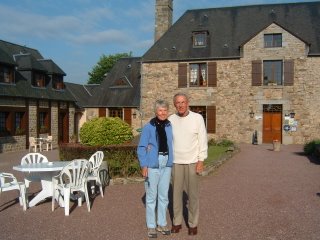
Le Manoir d'Acherie
Our Manoir de l’Acherie was located just outside Villedieu-les-Poêles, a charming community that was decked out with Allied flags, like most Norman towns, in preparation for the D-Day anniversary later in the week. We joined many Americans, plus nationals of other Allied countries and a number of Germans, in visiting the invasion sites. The most moving were Pointe-du-Hoc, which is still pocked with bomb craters blasted before the Rangers stormed it, and the American cemetery, which is an extraordinarily peaceful place despite the crowds of tourists. We also visited the visited the village of Ste.-Mère-Église, site of the 101st Airborne’s drop, which displays a replica of the paratrooper whose ‘chute became entangled with the church tower.
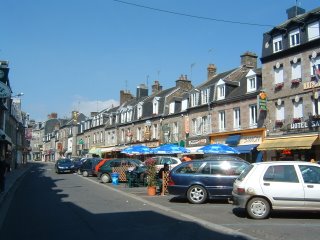
Villedieu-les-Pôeles
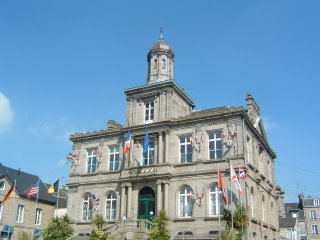
Villedieu City Hall
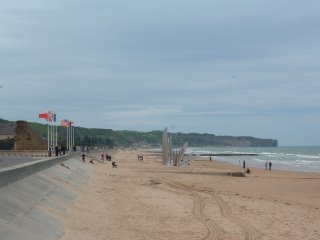
Omaha Beach
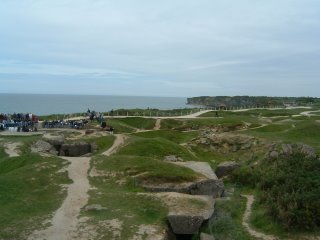
Pointe-du-Hoc

Ste.-Mère-Église

American cemetery in Normandy
Not far away from our lodgings was Mont-St.-Michel, also damaged in World War II as it has been in conflicts beginning with the Hundred Years War. We had, of course, read and heard much about the abbey, but our first glimpse was still exciting as it seems to rise out of the Atlantic like a mysterious island. Little remains of the abbey’s original furnishings, but an excellent audioguide described monastic life in this exceptionally wealthy community.
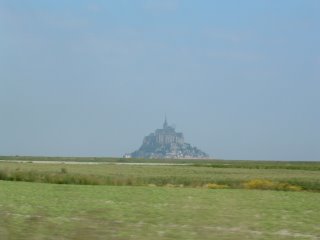
Mont-St.-Michel

Mont-St.-Michel
From Mont-St.-Michel we continued into Brittany to visit St.-Malo, where we circled the old city atop its ramparts to enjoy some extraordinary views. Like so much of Normandy, St.-Malo was badly damaged in World War II, but it has been subsequently rebuilt to reflect its former glory. Jacques Cartier sailed from here to explore eastern Canada, and the subsequent fur trade made the city prosperous.
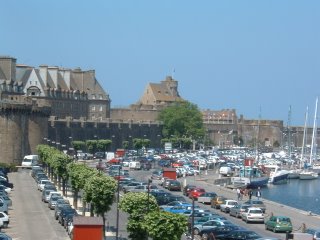
St.-Malo
After visiting town after town with names familiar from the war, we toured the Mémorial, a war museum in Caen, to gain some perspective. We spent almost four hours there and came away exhausted but impressed, for the museum, with its extraordinary number of multimedia exhibits, is more than a visitor can digest in one day. We were particularly struck by the emphasis on the experiences of individual participants in the invasion, both Allied and German.
While in Caen, we visited the Égliste de la Trinité, the church built by Queen Mathilde, wife of William the Conqueror, as part of the Abbey for Women that she founded. A wedding was in progress so we could not inspect the church in detail, but we were able to observe contemporary French customs at such an event. The bride and groom were dressed in traditional wedding regalia (e.g., white gown), but some of the guests came in open collar shirts and Capri pants. A choir sang (i.a., something to the tune of the Largo from Dvorak’s “New World Symphony”), but the only musical instrument was a guitar. Outside we took a picture of the happy couple’s car—she seemed to be a scrub nurse, but his profession was a good deal less certain. A prize to the reader who figures it out—perhaps a copy of this sign, which we photographed in Villedieu-les-Poéles. You’ll be happy to know that we obeyed.
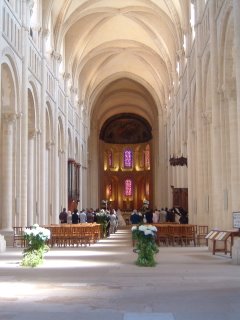
La Trinité Church in Caen

Newlyweds' car (Caen)
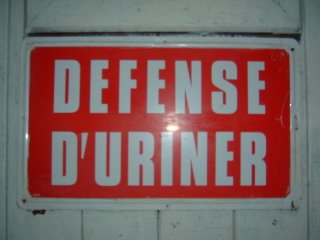
We obey signs!
Another highlight of Normandy was our visit to the Bayeux Tapestry, the famous pictorial history of William’s invasion of England and the events leading to it. We had certainly seen pictures of panels from the tapestry, but we were unprepared for its total length (some 85 meters) and its degree of detail. The display is expertly organized with a cleverly produced introductory film and a running audio commentary as visitors examine the 58 panels. We give the tapestry a “don’t miss!” recommendation.
Our final foray was a stop in Dol-de-Bretagne, right off the autoroute in southwest Brittany. Todd had vaguely remembered that Dol was the home of Alan, the precursor of the Stewart/Stuart/Steuart family, who joined other local seigneurs in invading England with William. This was indeed the case, and Dol has memorialized its son and his progeny by naming the main street and one bar after them. Honi soit qui mal y pense.
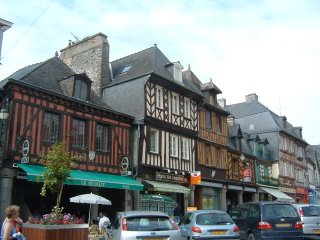
Dol-de-Bretagne
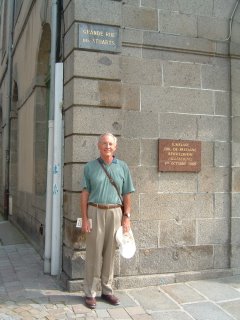
Todd on "his" street
